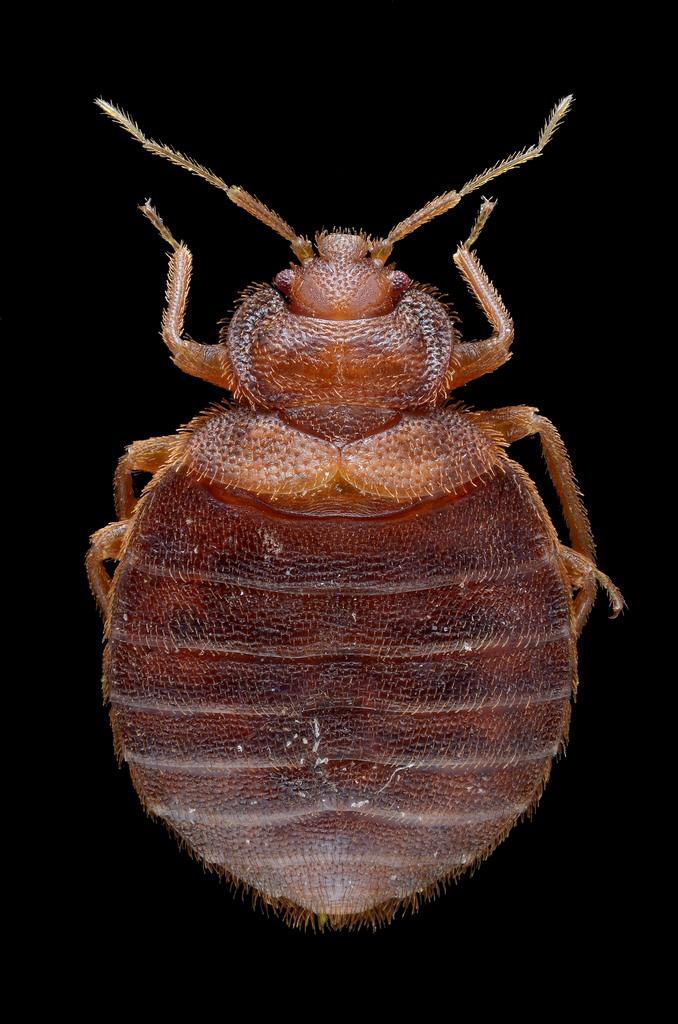
Female of the bed bug – Cimex lectularius – on the fur of one of its hosts, a bat.
Scale : bug length ~ 5 mm
Bed bugs belong to the Hemiptera order of insects – an order that comprises up to 80,000 different insect species including cicadas, aphids, scorpions, leafhoppers and shield bugs. Most members of the Hemiptera order feed on plants, with a smaller number feeding on mammals and birds.
Within the Hemiptera order, bed bugs fall into the Cimicidae family of parasitic bloodsucking (hematophagous) insects. There are approximately 90 species in this family, but only three are known to feed on human blood – Cimex lectularius, Cimex hemipterus and Leptocimex boueti.
Cimex lectularius is the most common type. It has adapted exceptionally well to human habitats and can survive in a wide range of climates. The less common Cimex hemipterus is found mainly in tropical regions where it infests bats and poultry as well as humans. Finally, Leptocimex boueti is found in tropical areas of West Africa and South America, where it feeds on bats as well as people.
Cimex pilosellus and Cimex pipistrella feed mainly on bats. Haematosiphon inodora infests poultry in North America, while Oeciaus vicaruis and Cimexopsis nycatalis feed mainly on wild birds.
Bed bugs are wingless insects, with mouthparts that are designed to pierce the skin and suck blood. The lower lip, called a labium, includes a grooved sheath to receive modified maxillae and mandibles, known as stylet fascicles, which are used to penetrate the host’s skin. A central section forms a salivary and food canal.
The mandibular stylet includes tiny teeth that move backwards and forwards, slicing through tissue to create a path for the mouthparts to reach the host’s blood vessels. Before eating, bed bugs are roughly the size of an apple seed, but they can expand to three times their normal size after a meal. It takes about ten minutes for the insect to fully engorge itself.
The upper body is covered with short golden hairs, and their eyes and antennae are easily visible. Adult bugs come in various shades of brown, while nymphs are a cream or translucent color. Bed bugs have strong legs, enabling them to easily climb up vertical surfaces like wood, paper and fabric. They struggle to climb smooth surfaces like metal, plastic or glass. They communicate with each other using chemicals and pheromones.
They can survive temperatures ranging from 14°F (-10°C) to 113°F (45°C). At temperatures lower than 61.0°F (16.1°C), adult bed bugs enter a state of semi-hibernation. In this state, they can survive for up to 12 months without a blood meal, however under normal conditions they prefer to feed once a week, with the average adult bed bug lifespan being about 10 months.
If you really want to get rid of bed bugs today try SayByeBugs! It was developed as a safe and highly effective alternative among a sea of products that rarely deliver on their promises.







